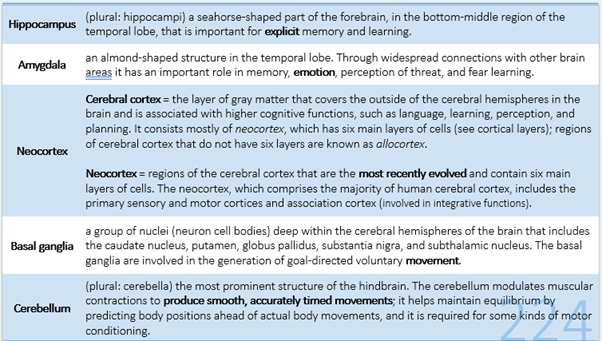Psychology U3AOS2 - (Parts of the Brain)The Psycho-biological Process of Memory
1/13
Earn XP
Description and Tags
the roles of the hippocampus, amygdala, neocortex, basal ganglia and cerebellum in long-term implicit and explicit memories
Name | Mastery | Learn | Test | Matching | Spaced |
|---|
No study sessions yet.
14 Terms
The Biology of Memory
The ability to maintain information in LTM involves a gradual strengthening of the connections among the neurons in the brain.

Role of the Medial Temporal Lobe
Located in the middle of the temporal lobe, such as the hippocampus, it plays a key role in the consolidation of explicit memory including episodic and semantic memories) and the amygdala for emotion-related memory. For explicit memories, encoding happens in the hippocampus, followed by a transfer to a more permanent storage in the neocortex.
Role of Hippocampus in Explicit Memory
Helps us encode info abt spatial relationships
Serves as a switching point that holds the memory for a short time and then directs indo to other parts of the brain, such as the neocortex for long-term storage.
Without it, our explicit memories would be inefficient and disorganised.
Role of Hippocampus (hcps) in Sleep
Active during sleep - memories are processed and filtered for later retrival.
More hippocampal activity = better recall next day.
Removed < 3 hrs after learning = no LTM; removed > 48 hrs = LTM intact
During sleep, hippocampus ↔ neocortex communicate to consolidate memories.
Amnesia
The partial or complete loss of memory
Retrograde Amnesia
The inability to encode and store new memories after brain injury, often related to hippocampal damage.
Basal Ganglia
A series of subcortical brain structures that are intimately involved with various aspects of movement, such as voluntary motor activity, habit learning, and the selection of actions.